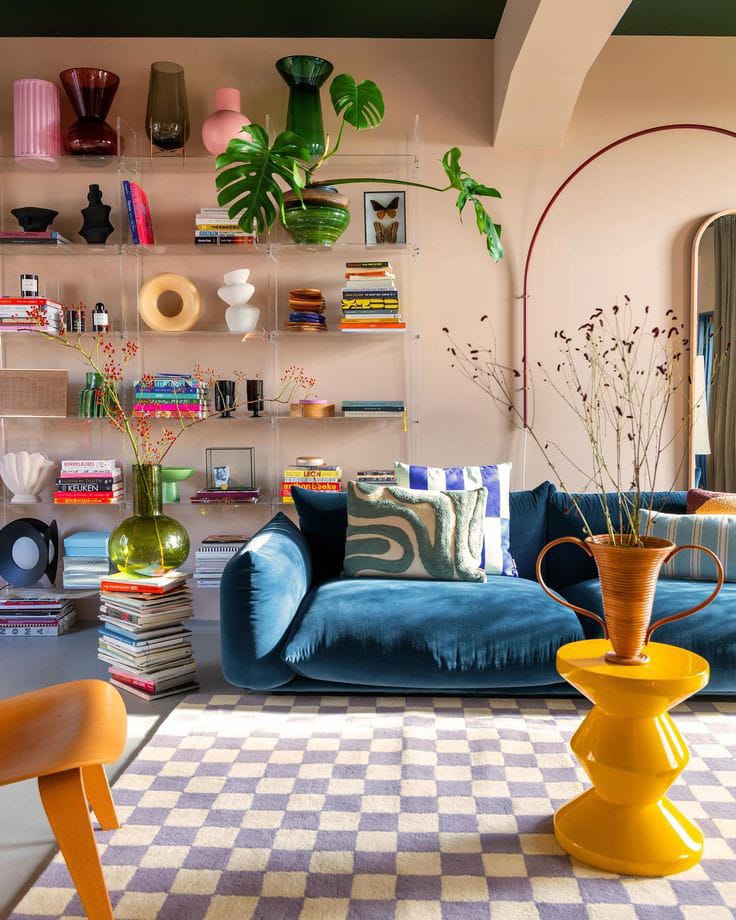Trending Home Decor Styles in 2025
Trending Home Decor Styles in 2025
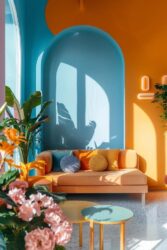
A Fresh Take on 2025 Interior Design Trends
Home embellishment in 2025 centers around an intricate interplay of elegance, comfort, and eco-consciousness. With an increasing inclination towards spending more time indoors, homeowners seek to craft environments that seamlessly blend aesthetic appeal with practicality. A heightened emphasis on sustainable resources underscores the desire to minimize ecological footprints while cultivating chic interiors. Though minimalist aesthetics remain favored, they now incorporate opulent elements to evoke a more cultivated ambiance. Additionally, eclectic inspirations, such as the harmonious fusion of Japanese and Scandinavian influences—termed Japandi—are gaining momentum. Meanwhile, retro designs harking back to the spirited 70s and 80s are resurging, injecting a playful nostalgia into contemporary spaces. Complementing these emerging styles, biophilic design—the art of integrating natural elements—has gained prominence, fostering tranquility and a profound connection to the natural world.
1.Minimalist Luxe: Simplicity Meets Extravagance
Minimalism, characterized by its uncluttered layouts and clean aesthetics, continues to dominate but has evolved into something more sumptuous for 2025. This elevated approach, dubbed “Minimalist Luxe,” retains its essence of simplicity but introduces lavish materials to heighten sophistication.
Color Palette for Minimalist Luxe
Minimalist Luxe interiors feature soft, neutral shades such as pristine white, muted beige, and delicate gray, punctuated by glimmering metallic details in gold, brass, or copper for an opulent touch. Jewel hues like deep emerald or midnight navy are subtly incorporated to inject vibrancy and depth.
Exquisite Materials for Minimalist Luxe
This elevated minimalist aesthetic leans towards refined materials: polished marble countertops, plush velvet cushions, and airy linen drapes. Metallic accents—manifested through brass hardware or sculptural light fixtures—imbue warmth. Key pieces of furniture, whether it be a sumptuous velvet chaise or an elegantly veined marble dining table, command attention while maintaining functionality.
-
Sustainable Elegance: A Responsible Design Ethos
Sustainability serves as a cornerstone of 2025’s decor ethos. With growing environmental awareness, there’s a pronounced shift towards utilizing repurposed furnishings and eco-conscious materials. This approach not only fosters stylish abodes but also promotes ethical living.
-
Sought-After Sustainable Materials
Materials such as fast-growing bamboo, reclaimed timber, and repurposed textiles take center stage in sustainable decor. Their inherent textures and warmth complement modern aesthetics. Additionally, furniture fashioned from recycled metals or biodegradable composites offers a contemporary yet responsible solution.

2. Japandi Aesthetic: A Harmonious Duality
Blending the serene simplicity of Japanese design with the cozy functionality of Scandinavian decor, Japandi has emerged as a leading trend. This style champions the creation of tranquil, uncluttered spaces that prioritize both form and purpose.
-
Signature Colors in Japandi
The Japandi palette predominantly consists of earthy neutrals—soft taupe, creamy beige, and soothing cream—designed to evoke serenity. Natural wood finishes play a pivotal role, often left untreated to highlight their organic allure.
-
Essential Furniture and Layout Concepts
Japandi furnishings emphasize utility and understated elegance. Low-profile seating, minimalist wooden tables, and woven accents feature prominently. Spatial arrangements prioritize openness and clarity, fostering an environment conducive to relaxation and mindfulness.
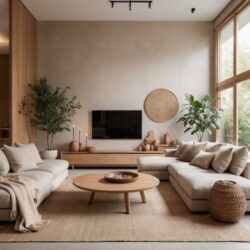
3. Retro Renaissance: Revisiting the Past with Modern Flair
A revival of bold retro aesthetics from the 70s and 80s is making waves in 2025. These nostalgic designs, characterized by vibrant hues and playful patterns, are reimagined through a contemporary lens.
-
Hallmarks of Retro Decor
Expect a resurgence of rich jewel tones, whimsical lighting fixtures, and bold geometric motifs. Statement pieces such as plush, vividly colored sofas, circular chandeliers, and psychedelic wallpaper evoke vintage charm. For subtler nods to the era, retro-inspired accessories—like patterned cushions or vintage floor rugs—add character without overwhelming.
-
Balancing Retro with Modern Elements
To prevent retro-inspired interiors from appearing dated, a harmonious blend with modern elements is key. Pairing a vivacious retro armchair with sleek, neutral-toned furniture helps strike a perfect balance between past and present.
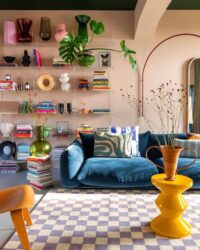
4.Biophilic Ambiance: Nature at Home
Biophilic design, which seeks to bridge the indoor environment with the natural world, remains a prominent trend. This approach emphasizes natural elements to enhance well-being and cultivate serene living spaces.
-
Illuminating with Natural Light
Maximizing daylight is a cornerstone of biophilic design. Expansive windows, sliding glass doors, and skylights invite sunlight to permeate interiors, creating a luminous and airy atmosphere. Beyond aesthetics, ample natural light positively impacts mood and circadian rhythms.
-
Organic Silhouettes in Furnishings
Furniture boasting organic curves and fluid shapes—such as rounded sofas or sinuous coffee tables—softens a room’s aesthetic, promoting relaxation. These fluid designs, inspired by the natural world, contribute to a soothing ambiance.
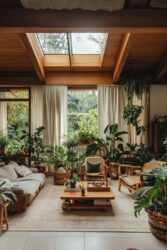
5.Multi-Purpose Spaces: Versatility in Design
With remote work and study becoming more prevalent, homes are being reconfigured to accommodate diverse functions without compromising on style.
-
Adaptive Furniture for Compact Living
Convertible furniture solutions—think foldable desks, modular sofas, and ottomans with hidden storage—offer versatility, particularly in compact living spaces. Expect to see ingenious designs like Murphy beds that transform into shelving units when stowed.
-
Creative Zoning Techniques
In open concept living areas, defining distinct zones helps delineate functions while maintaining an open feel. Instead of rigid partitions, soft barriers like area rugs, freestanding shelves, or curtains create subtle separations. Cozy alcoves, such as reading nooks adorned with plush seating and ambient lighting, enhance the functionality of such spaces.
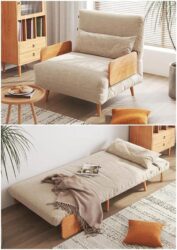
6.Illuminating Art: Sculptural Lighting Takes the Stage
In 2025, lighting transcends mere utility to become a focal decorative element. Statement lighting fixtures serve as both functional sources of illumination and captivating art forms.
-
Trending Sculptural Lighting
Sculptural lighting blends aesthetics with purpose. Oversized pendants, avant-garde chandeliers, and artistic floor lamps crafted from metal, glass, or fabric serve as conversation starters. These pieces, with their bold designs, elevate the decor while providing practical lighting solutions.
-
Intelligent Illumination Systems
Smart lighting technology continues to gain traction. With customizable brightness, hue, and warmth controlled via apps or voice commands, homeowners can effortlessly tailor the ambiance of their spaces.
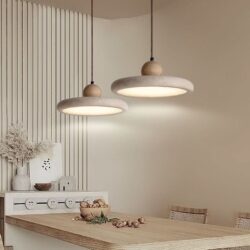
7.Bold Textures and Accent Walls
Accent walls are making a dynamic comeback in 2025, with bold patterns and tactile surfaces becoming the norm. Rather than plain painted walls, homeowners are embracing intricate designs and textures to inject personality into their interiors.
-
Wallpaper Revival
Elaborate wallpapers featuring botanical motifs, geometric patterns, and large-scale murals are increasingly popular. For those seeking subtler textures, wallpapers crafted from materials like grasscloth or woven fibers add depth without overwhelming.
-
Textured Wall Enhancements
Three-dimensional wall panels, made from wood, stone, or brick, offer a striking alternative to traditional painted walls. These tactile installations provide visual interest and warmth, transforming ordinary spaces into focal points.
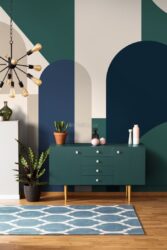
Conclusion;
The decor landscape of 2025 is defined by a delicate balance of style, utility, and sustainability. From the understated elegance of Minimalist Luxe to the nostalgic charm of retro revival and the calming presence of biophilic design, there’s a trend for every taste. With an emphasis on eco-friendly materials, multi-purpose furnishings, and personal expression, these trends encourage thoughtful, stylish living. Whether undertaking a full renovation or a minor refresh, 2025’s decor ideas offer endless inspiration for crafting a home that is both beautiful and practical.
FAQs
1. Which color palettes dominate 2025 home decor? Neutral tones such as beige, cream, and gray dominate, accented with metallic details in gold and brass. Additionally, jewel tones like emerald and navy provide striking pops of color.
2. How can small apartments incorporate biophilic design? Small spaces can benefit from biophilic design by introducing greenery, utilizing natural materials, and maximizing sunlight. Even a few potted plants can transform the atmosphere.
3. Is retro decor cost-effective for modern living? Yes, retro decor can be budget-friendly by sourcing vintage-inspired items and shopping at thrift stores. Bold accessories and vibrant colors can also recreate the retro vibe affordably.
4. What are the advantages of multi-functional furniture? Multi-purpose furniture optimizes space, enhances organization, and offers flexibility, making it ideal for compact living environments.
5. Can different decor styles be blended in one home? Certainly! Blending styles adds character to a home. Using a cohesive color scheme and ensuring balance between styles helps create a harmonious look.

